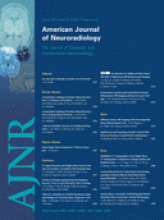Abstract
BACKGROUND AND PURPOSE: Development of callosal fibers is important for psychomotor and cognitive functions. We hypothesized that brain maturation changes are detectable beyond 2 years of age by using diffusion tensor imaging (DTI) of the corpus callosum (CC).
MATERIALS AND METHODS: T2 and fractional anisotropy (FA) maps of the brain of 55 healthy subjects between 0.2 and 39 years of age were obtained. Quantitative T2 and FA values were measured at the genu and splenium of the CC (gCC and sCC). Fiber tracking, volumetric determination, and the fiber density calculations of the CC were related to age. A paired t test was used for significant differences between the values at the gCC and sCC.
RESULTS: T2 relaxation times at gCC and sCC decrease fast in the first months of life and very little after 2 years of age. The FAgCC increases until 5 years of age and remains nearly constant thereafter; it showed a significant increase from 0 to 2 years versus 2–5 years, whereas there was no difference in the other age groups. FAsCC values showed no significant changes after 2 years of age. The fiber density of the CC shows a tendency of inverse age dependence from childhood to adulthood.
CONCLUSION: Rapid ongoing changes in brain maturation (increase in FAgCC) are detectable until 5 years of age. DTI reveals more information about brain maturation than T2 relaxometry.
- Copyright © American Society of Neuroradiology












